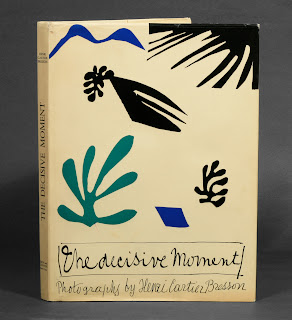One thing I can say with certainty…Henry Cartier Bresson led
an interesting life. Most folks in the
know consider him to be the father of modern photojournalism, but his creative
life began as a painter….later he switched to photography….and even later in
life returned to the canvas.
He made the switch to photography when he came upon the
realization during his 30s that a photograph could fix eternity in an
instant. He began traveling the world to
take pictures.
His first photojournalism job was to cover the coronation of
King George VI. His pictures cover a
unique perspective since his photos show the people along the King’s coronation
route…..and none of the King.
During World War II Cartier Breeson joned the French army
and in June, 1940 during the Battle of France he was captured by the Germans
and held as a POW. All total he spent
35 months as a prisoner, but on this third try was able to escape. He spent the remainder of the war documenting
the Occupation and the Liberation of France through photographs along with
other scenes from the war.
After the war he formed Magnum Photos with Robert Capa,
David Seymour, William Vandivert and George Rodger. Their cooperative picture agency split up
photo assignments throughout the world.
Cartier-Breeson covered China and India, and his partners covered other
areas.
During his career with Magnum Cartier-Breeson covered
Gandhi’s funeral in India in 1948 and the last stage of the Chinese Civil War.
In 1952, Cartier-Breeson published his book, The Decisive Moment…..a book of 125
photos from the east and west.
Cartier-Breeson stated, “There is nothing in this world that does not
have a decisive moment.” The cover was
drawn by Henry Matisse.
In 1957, Cartier-Breeson told the Washington Post….”There is a creative faction of a second when you
are taking a picture. Your eye must see
a composition or an expression that life itself offers you, and you must know
with intuition when to click the camera.
That is the moment the photographer is creative.”He became the first
Western photographer to work “freely” in the post-war Soviet Union.
By 1966, he left Magnum to concentrate solely on portraiture
and landscapes. By 1968, Cartier-Breeson
turned back to drawing and painting admitting that had said all he could
through his photography. He married
Magnum photographer, Martine Franck, thirty years younger than himself and had
a daughter with her.
Photographs of Cartier-Breeson are scarce….but they do exist
like this one.
He didn’t like having his picture made. In 1975 when he received an honorary degree
from Oxford University he held a paper in front of his face.
Imagine all of the history this artist witnessed!!!




No comments:
Post a Comment